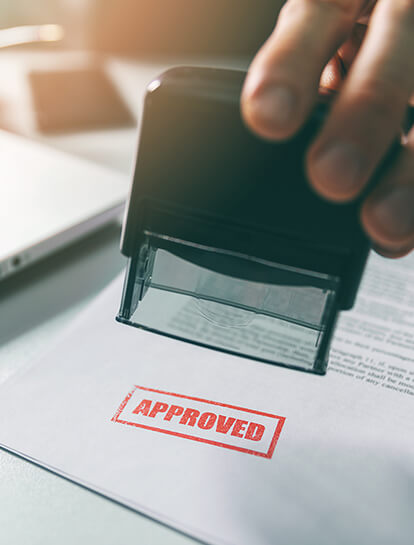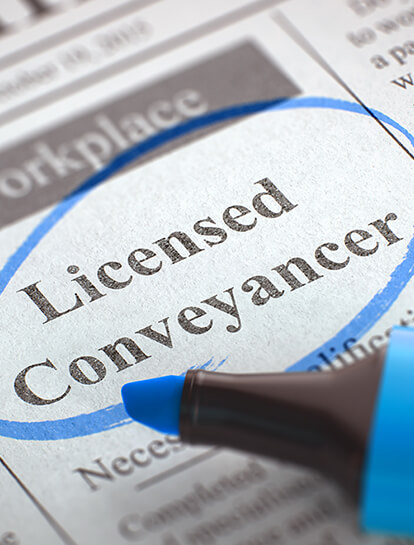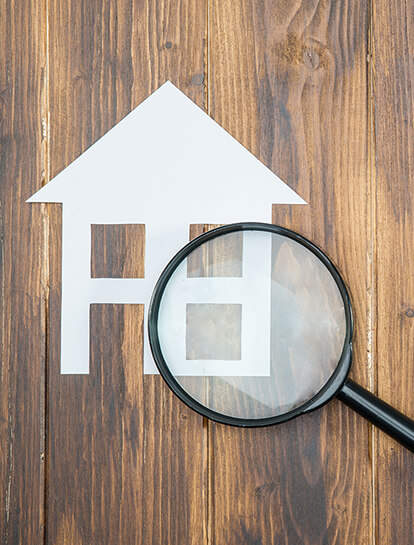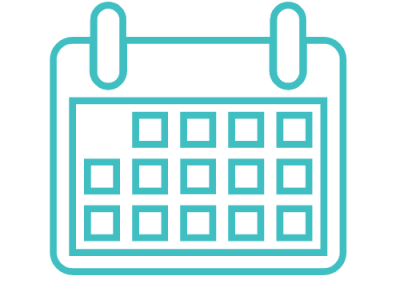Our First Home Buyer Guide Menu
Here’s our buying a house in Brisbane checklist:
1. Your budget and deposit
2. Should I use a mortgage broker or apply directly with a bank?
3. Explore your home loan options
4. Do your research
5. Get your finance pre-approved and start house hunting
6. Finding a conveyancer
7. Make an offer
8. Finalise settlement
9. Building and pest inspections
10. Move in and manage your mortgage

1. Your budget and deposit
As a first home buyer knowing what you can afford to pay is the best place to start this process. You will need to be familiar with your budget to figure this out.
There are plenty of home loan calculators available that can help you work out repayment rates for your new potential home.
Start by exploring what price range you’d like to buy in by looking at the suburbs you interested in and the size of the house you’d require. This will give you a good starting point of what you’ll need to borrow. But don’t worry this figure will change as you do through the process.
Let’s say you decide that a house for $500,000 is a great starting point. With today’s average interest rate of approximately 3.02 per cent over a 30-year loan term on principal and interest (could be higher or lower depending on your deposit etc) you’d be expected to pay $2114 per month. Or just under $530 each week.
Explore how this would fit into your budget and adjust your expectations from there? You may also wish to use a budget planner to work out your current situation and start slotting in your future estimated finances.
Once you have a list of your debts you can start to work out how to manage these more effectively.
Start paying off your credit cards, store cards, and personal loans. Or talk to your bank about consolidating debts into one so it’s easier to manage.
What is debt consolidation?
This process involves combining multiple debts into a single loan, often with a lower interest rate and more manageable monthly payments. Here are ways debt consolidation can help you save up for your first home buyer loan deposit:
Streamline your financial obligations, making it easier to track and manage your payments
Avoid juggling multiple due dates and varying interest rates.
Secure a lower interest rate, which can lead to reduced monthly payments
Free up additional funds that you can allocate towards saving for your home deposit.
Restructure your debts with a clear repayment plan so you can focus on saving for your home without the burden of excessive debts.
One of the biggest reasons home loan applications get rejected is because of undisclosed debts. Certain types of debt, such as HECS (Higher Education Contribution Scheme) and Afterpay, can impact your mortgage application. .
Lenders take into account your existing debts when assessing your borrowing capacity. HECS, Afterpay and similar BNPL debts are considered a liability and is factored into your overall financial obligations.
This means that your ability to borrow for a home loan may be reduced, as lenders typically apply a higher assumed repayment amount for HECS debt. In addition, some BNPL providers may report your repayment behavior to credit agencies. If you miss payments or have a history of late repayments, it can have a negative impact on your credit score. Lenders consider your credit score when evaluating your loan application.
They also assess your ability to service your debts when determining your eligibility for a mortgage. If you have outstanding Afterpay or BNPL balances, they may impact the amount you can borrow or influence the lender’s decision on your application.
You should look at buying your first home when you’re in a reasonably stable position. That is, you’re not expecting any massive new bills coming your way and your employment prospects are stable.
It’s best not to have any major changes to your personal situation unless you absolutely have to during this period of time. This can be overcome sometimes, but it is a credit critical issue that the lenders will need to be covered off on.
Lenders will want to see your income and bank statements for the last three months. Bank statements are needed to show your living expenses. It’s important to know that you can’t just write down what you think it costs to run a household, it needs to be accurate.
To obtain a first-time homebuyer loan, you first need to determine if you meet the eligibility criteria set by the loan program or lender offering the first-time homebuyer loan.
Eligibility requirements may vary depending on the specific loan program, but common factors include being a first-time homebuyer (someone who has not owned a home in a specified period) and meeting certain income limits.
What is a home loan preapproval?
Before actively searching for a property, consider seeking pre-approval from a lender. Pre-approval involves submitting your financial information and undergoing a preliminary assessment by the lender to determine the loan amount you may qualify for. Pre-approval can give you a clearer understanding of your budget and make you a more attractive buyer to sellers.
Submit a formal loan application to your chosen lender. The lender will require various documents, including proof of income, identification, savings history, employment details, and information about the property you intend to purchase. Be prepared to provide these documents promptly to avoid delays in the application process.
The lender will assess your loan application, considering factors such as your financial situation, credit history, employment stability, and property valuation. They will determine whether to approve your loan based on their assessment. This process may take several weeks, so it’s important to be patient during this stage.
Generally, a deposit of 20 percent of the property value is ideal to buy your house, but not always needed. With a good credit rating and steady income, you could get away with less (sometimes as low as 5 percent).
However, if it’s less than 20 percent you may need to pay Lenders’ Mortgage Insurance.
What is Lenders Mortgage Insurance?
Lenders Mortgage Insurance (LMI) is a type of insurance that protects lenders when borrowers have a smaller deposit (less than 20% of hte property’s purchase price) or higher-risk loan.
LMI safeguards the lender in case the borrower defaults on the loan, and the property is sold at a loss. It does not provide any direct benefit to the borrower but rather protects the lender’s financial interests. However, can enable those with a smaller deposit to enter the property market and secure a home loan.
For our $500,000 home loan example, you would need up to $100,000 deposit. But you can cough up a deposit as low as $25,000 plus fees and LMI.
Yes. A guarantor can offer some of the equity in their own property as a guarantee that you will be able to make your mortgage payments.
This can effectively provide you with your deposit too while reassuring the lender that the mortgage will be paid for.
If the borrower can’t make their repayments, then the guarantor becomes legally responsible for paying the loan.
The limits on who you can use as a guarantor will vary depending on the lender, but most will allow for immediate family members to take on this role (such as your spouse or your parents).
Some lenders broaden this definition to include extended family, which means that you could potentially use your in-laws, grandparents, siblings, or even an obliging ex-spouse.
The one thing all lenders will require is that the guarantor is a home-owner with sufficient equity (the value of the property minus the balance of any existing mortgage).
2. Should I use a mortgage broker or apply directly with a bank
A mortgage broker is essentially a “middleman” between first home buyers and the bank. They are a type of financial advisor who specializes in helping people find the right home loan.
Engaging a broker can be an excellent way to find the best value home loan across a range of lenders for your personal circumstances.
While going directly to a specific bank will limit your loan options to only those that they offer. If you’re not set on one particular banking institution, then getting a mortgage broker to assess the competition can be a benefit for you in the long run.
A mortgage broker can also assist you in understanding the finance and mortgage industry and save you time when it comes to researching different home loan options.
The team at North Brisbane Home Loans:
Make finance easy to understand the different range of loan products and provide you with peace of mind
Our experienced mortgage brokers can confidently offer you the best advice when it comes to finding a loan for you
Use up-to-date technology so they know what’s happening in the market, analyzing rates from multiple lenders, and securing the best deal on the market for you!
When should you contact a mortgage broker?
Everyone’s situation is different but six months out or earlier is generally a good timeline to connect with your chosen mortgage broker.
You can also connect with a first home mortgage broker to get a feel for what you should be focusing on in order to get a pre-approval.
So whatever stage you’re at, they can assist.


3. Explore your home loan options
Exploring the home loan options available can be an overwhelming prospect. With dozens of different home loan types and each first home buyer having a different situation, it’s important to find the right one for you.
Variable vs fixed home loans
Fixed rate loans will give you a set interest rate for a period of time, sometimes up to five years. While a variable loan will have an interest rate that fluctuates.
They both have their pros and cons. There is also a third alternative of a split home loan, which means you could find a balance between the two by essentially having two home loans.
Repayment Types
There are two main types of repayments:
Principal and interest, which involves paying off both the interest and an extra portion of your principal loan. This type of loan will allow you to reduce the amount you owe quicker. This loan is suited to people like first home buyers who want to live in their property.
Interest-only loans involve only paying the interest portion of your loan, keeping the amount that you owe constant. Interest-only loans are usually used by property investors who want to minimise repayments.
4. Do your research
The most important part of purchasing your first home is to be organised and do your research. You could most definitely benefit from knowing what first home buyers grants are out there that you can take advantage of.
In general, a first home buyers grant is a financial incentive provided by the government to assist individuals or couples who are purchasing their first home. The grant is intended to help alleviate some of the financial burden associated with buying a property and promote homeownership.
The specific details and eligibility criteria for first home buyers grants can vary between states and territories in Australia. Below is a general overview of how a first home buyers grant works:
1. To be eligible for a first home buyers grant, you generally need to meet certain criteria. This may include being a permanent resident or citizen of Australia, being at least 18 years old, and never having owned a property before (including investment properties).
2. You need to submit an application for the grant to the relevant government authority in your state or territory. The application process typically requires providing documentation and evidence to demonstrate your eligibility.
3. The amount of the grant can vary depending on the location and specific grant program. It is usually a one-time payment that is either a fixed amount or a percentage of the property’s value, up to a certain limit. Some grants may have different amounts for new homes and established homes.
4. The grant may have specific requirements regarding the type of property that qualifies. This can include factors such as the property’s value, whether it is a new construction or an established home, and whether it will be your primary residence.
5. There may be certain timeframes associated with the grant, such as when you need to purchase the property or when you need to move into it. It’s important to be aware of these timelines to ensure you meet the grant’s conditions.
6. Once your application is approved, the grant amount is typically disbursed to you after settlement or completion of the property purchase. The funds can be used towards the deposit, fees, or other expenses related to buying your first home.
You’re fortunate to have stumbled upon our first home buyers guide as we have compiled a list of the major first home buyer grants that can help increase your deposit.
The First Home Owners Grant (FHOG)scheme was introduced on 1 July 2000 to offset the effect of the GST on home ownership. It is a national scheme funded by the states and territories and administered under their own legislation.
The scheme is a one-off grant payable to the QLD first home owners that satisfy all the eligibility criteria.
How much is the QLD First Home Owners Grant?
Queenslanders can get $15,000 towards buying or building a new house, unit, or townhouse valued at less than $750,000. The first home buyers grant is paid per new home, not to each of the applicants for the same home.
Can you use First Home Owners Grant as deposit?
Yes, the FHOG can be used as deposit. But while it can be a valuable financial resource for first home buyers, it generally cannot be used as the entire deposit. You will need to contribute 5% to 10% of the property’s purchase price from your own savings, including the FHOG.
If you are building a new home, the FHOG may not be available until construction commences. Therefore, relying solely on the FHOG as your deposit may not be the most practical approach.
Take the Queensland Government eligibility test to assess your situation.
The First home super saver (FHSS) scheme was introduced by the Australian Government in the Federal Budget 2017–18 to reduce pressure on housing affordability.
The FHSS scheme allows you to save money for your first home inside your super fund. This will help first home buyers save faster with the concessional tax treatment of superannuation.
You can contribute up to $15,000 per year, with a total cap of $50,000. However, these contributions are subject to annual contribution limits, which include the compulsory superannuation guarantee from your employer.
To access the FHSSS, you must be 18 years or older. You must also be a first home buyer, meaning you have never owned any kind of property before. This includes investment properties, vacant land, commercial property, leases of land, or company title interests in land. Couples, siblings, or friends who are all first home buyers can each use their own FHSSS contributions to purchase the same property.
Once you are 18 years old, you can request a FHSSS determination from the Australian Taxation Office (ATO). This determination will specify the maximum amount you can access for your first home purchase. After receiving the determination, you can apply for a release of the specified amount. The savings released under the FHSSS must be used within 12 months to sign a contract to purchase or construct a home.
Read more about the First Home Super Saver Scheme here.
RegionaThe NHFIC guarantee for the home loan can be up to a maximum of 15% of the property’s value, as assessed by the Participating Lender. It’s important to note that this guarantee is not a cash payment or a deposit for the home loan.
First Home Buyer Guarantee
The Regional First Home Buyer Guarantee (RFHBG) is a component of the Home Guarantee Scheme (HGS), which is an initiative by the Australian Government to support eligible first home buyers in purchasing a home sooner.
Administered by the National Housing Finance and Investment Corporation (NHFIC) on behalf of the government, the RFHBG specifically aims to assist eligible regional first home buyers in acquiring a home in a regional area.
The RFHBG is available from October 1, 2022, to June 30, 2023. During this period, there are 10,000 RFHBG places allocated for eligible regional first home buyers. Under the RFHBG, the NHFIC guarantees a portion of the eligible regional first home buyer’s home loan obtained from a Participating Lender. This guarantee enables the home buyer to purchase a home with a deposit as low as 5%, without needing to pay Lenders Mortgage Insurance.
Under the RFHBG, the NHFIC guarantees a portion of the eligible regional first home buyer’s home loan obtained from a Participating Lender. This guarantee enables the home buyer to purchase a home with a deposit as low as 5%, without needing to pay Lenders Mortgage Insurance.
A regional area, as defined for the RFHBG, includes Statistical Area Level 4 (ASGS SA4 2016) areas in a state or the Northern Territory that are not capital cities, as well as Norfolk Island, Jervis Bay, Christmas Island, and Cocos (Keeling) Islands. Capital city areas and the entire Australian Capital Territory are excluded from the RFHBG.
First time home buyers can use the RFHBG to purchase various residential property types. They include existing houses, townhouses, apartments, house and land packages, land with a separate contract to build a home, and off-the-plan apartments or townhouses. Each location has specific property price caps, and different property types have specific timeframes and criteria.
Read more about the Regional First Home Buyer Guarantee here.
The stamp duty concession for first time home buyers in Queensland is a scheme introduced by the state government to assist eligible individuals in purchasing their first home. Properties under $550,000 do not incur stamp duty and this could save you a lot of money. If the property value falls between $550,000 and $650,000, you may still be eligible for a partial concession.
The amount of stamp duty you can save as a first home buyer in Queensland depends on the value of the property. If the property value is less than $500,000, you may be eligible for a full concession, meaning you won’t have to pay any stamp duty. For properties valued between $500,000 and $549,999, a partial concession reduces the amount of stamp duty you need to pay. The concession amount decreases on a sliding scale for properties valued between $550,000 and $650,000.
It’s important to note that the stamp duty concession only applies to the purchase of your principal place of residence. If you are buying an investment property, you won’t be eligible for the concession.
First home buyers guide PRO tip: You can combine other first home buyer grants like FHOG and the Home Builder Grant with the stamp duty concession to further reduce the overall cost of buying your first home.
Watch for flooding
A lot of Brisbane properties are susceptible to flooding. Get a free flood report on the Brisbane City Council website.


5. Get your finance pre-approved and start house hunting
It’s smart to get a pre-approval before you start house hunting so you know exactly how much you can offer a seller.
A pre-approval, also known as conditional approval, is a letter from your lender that tells you how much you’re likely to be able to borrow from the bank.
It also shows the seller that you’re making a serious offer, and gives them peace of mind that you can afford the property.
A pre-approval is also a requirement to be able to bid at some auctions.
Start house hunting
Now is the time to start looking for a property you love. Talk to real estate agents, visit open homes and ask for property reports. Property reports can show you the median price for units and houses in the same area, including a ballpark price range for the property you want.
Remember that the real estate agents you’re speaking with are ultimately employed by the seller. It’s good to be in negotiations with the agent after consulting your legal team but avoid disclosing your financial position.
Leave your emotions at the door
It’s easy to fall in love with a property, but make sure you’re making decisions that aren’t solely based on your emotions.
Rushing to buy without thinking things over can quickly lead to regret.
Buying your first home could be one of the biggest decisions of your life, so you need to make sure that you don’t come to regret it.
6. Finding a conveyancer
When you’re purchasing your first home, you should consider hiring a skilled conveyancer.
Conveyancing is the legal process of transferring property from one person or entity to another. Though you don’t legally need a conveyancer to buy or sell a property, they can help make the process much less stressful.
A conveyancer can help you review your contract prior to signing so that you can make sure everything is in your favour and there are no hidden clauses.
Conveyancers will also do relevant searches on your behalf to save you time and money in the future.
Hiring an experienced and qualified conveyancer will save you hours of paperwork and legwork as they take care of almost all the legal work for you. They liaise with real estate agents and building inspectors, keep your settlements on track with the vendor, and arrange reports for government agencies, all on your behalf.
Conveyancing fees in Queensland often range between $500 to $1600.
Hidden fees can be common in the conveyancing industry. Solicitors may not be charging rates at a fixed fee and any correspondence sent or received, documents prepared, or time spent on a matter may be billed.
It is important to ask your conveyancer whether or not their fees are fixed, and what events or circumstances could cause further charges to be incurred before you proceed.
Be contactable
Supply paperwork quickly (and remember documents may need witnessing)
Organise a building & pest inspection
Be in contact with your bank/mortgage broker and make sure they know who your conveyancer is.


7. Make an offer
Congratulations, you’ve found the right property for you. Now it’s time to make an offer.
Remember that just because a seller advertises their property for a particular price, it doesn’t necessarily mean that it’s the amount you have to pay. If you’ve done your research and spoken to your financial advisor you should be ready to go.
It’s best to submit a formal written offer to show you’re a legitimate buyer, rather than make a verbal offer.
A written offer should include:
Your full legal name
The sale price
The deposit
Finance, building and pest terms
Settlement dates
Lawyer details
Consider how to make your contract competitive by offering faster finance or settlement. Make sure that you talk to your mortgage broker about these things first.
You might also wish to include contract clauses to help reduce the risk during the buying process. These can include pest inspections, a good working order clause for electrical, plumbing and gas, building inspections and a swimming pool/spa clause.
8. Finalise settlement
If you’ve reached this stage, then most of the hard work is done and you’re ready to sign the Contract of Sale.
This is a legal document prepared by a lawyer or conveyancer.
A standard contract of sale will usually include:
Certificate of the title information
Offer date
Warnings, such as the necessity for smoke alarms
Settlement date of an intended property
The cooling-off period
Information about furnishing and fixtures
Improvements to the property
Property address
Loan details, such as the terms and conditions of the payment, and initial deposit
The price of the property
Name of the seller
Purchasing party information
Information about the selling agent
Please speak with your lawyer before signing anything, because a signed contract of sale is final.
In Queensland your deposit is usually paid in two instalments. The first is paid when you sign the contract and is usually only about $500 to $2000.
The second is paid once building and pest reports are completed and finance is officially approved. This deposit is larger and is paid later in the settlement process.
Now is the time to work with your mortgage broker to get your loan officially approved.
Send your contract of sale over to your mortgage broker and provide them with any other documents that may be needed.
Your broker will also need to organise a bank valuation of your new property.
Once your finance is approved let your conveyancer know that you’re good to go.
Congratulations, you’re now the owner of your very first home!


9. Building and pest inspections
Before your property enters settlement, a building and pest inspection can uncover defects in the property’s structure or show potential damage such as from termites.
Typically, the building and pest inspection happens after you have submitted a written offer. Most contracts include a clause in the contract specifying that the sale will be conditional to a building and pest inspection. This then gives you an opportunity to not proceed with the purchase or renegotiate if issues are identified.
So, the building and pest inspection most commonly happens in the cooling off period – usually between 7 to 14 days after a contract has been accepted – but it will depend on the time frame you negotiated in your purchase contract.
Yes. We recommend first home buys attend. This way your inspector can show you issues at the property and you can have a more thorough conversation to help alleviate any concerns and discuss problems you may have about the property.
Some major things an inspector will be looking for is:
Look at ceilings and behind bathrooms or kitchens for patches or water leaks
Look around the yard for draining issues or water ponding
Look in the meter box for past termite inspections
Check brickwork for cracking
The buyer covers the cost of the building and pest inspection.
The cost is very minimal in relation to the overall cost of the property but it gives you advice to make an informed decision on the property you are purchasing.
We’ve seen many instances where first home buyers have used the findings in their building and pest inspections to negotiate a better purchase price if there are areas of property that needs to be repaired or replaced.
Ask the following questions when speaking to potential inspectors:
How much experience do they have in the building industry?
Are they licensed and insured?
How many years have they been completing Building & Pest Inspections?
Is the inspector the owner of the business, or a subcontractor?
What type of report do they provide? Note: Tick and flick type reports don’t offer much detail for the buyer.
Either you are happy with the report and proceed with the contract, or if issues are raised you may request the owner complete the repairs, or you renegotiate the purchase price to cover the cost for repairs identified in the building and pest report.
10. Move in and manage your mortgage
Now that you’re ready to move in, you’ll need to continue to manage your mortgage.
It’s recommended to reassess your home loan on an annual basis. This is because your own personal circumstances may change or the world around you might change, forcing interest rates to increase or decrease.
Your mortgage broker can help you review your mortgage loan and make sure you’re always getting the best value for money from your lender.
5 Star Customer Rating
We put you first and genuinely want to help you achieve your property ownership dreams.
Being a top rated first home mortgage broker in Brisbane we delivered the best home loan for first home buyers. We have hundreds of happy customers, find out what they’ve said about working with North Brisbane Home Loans here.
Experienced Mortgage Brokers
With more than 90 years’ combined experience in the industry our first home buyer mortgage broker can confidently offer you the best advice when it comes to finding the best value loan for you. We are a team of experienced mortgage brokers in Brisbane that provides the best advice on home loan for first home buyers Brisbane.
We Work For You – Not The Banks
We don’t charge any fees for our first home owner loan services, our commission comes from the lender. As a personal first home mortgage in Brisbane, we’re by your side every step of the way to ensure you select the best loan product for your individual circumstances.
Exclusive Partner Network
Not only do we provide you with the best advice on first home owners loan needs, we also introduce clients to our network of trusted partners offering discounted rates.
Save time and money searching for reliable building and pest, real estate agents, solicitors and more.
In this first home buyers guide we put together, we have done our best to compile all the necessary information you need to be able to kickstart your homeownership journey. The one thing we cannot advise you on, however, is whether or not we, or any broker for that matter, can help you get the best first home buyer loans in the market.
As a mortgage broker, our role is to assist clients in finding suitable home loan options based on their specific needs and desired outcomes. While we strive to provide the most appropriate loan options available in the market, using the term “best” to describe loans is regulated by the Australian Securities and Investments Commission. The ASIC does not tolerate brokers using subjective terms like “best” because it can be misleading and not necessarily reflect an individual’s unique circumstances.
Instead, our focus is on offering tailored advice and guidance to help you navigate the home loan landscape effectively. We take into consideration factors such as your financial situation, income, deposit amount, credit history, and specific goals. By understanding your needs, we can recommend loan options that align with your requirements, such as competitive interest rates, flexible repayment terms, suitable features, and any applicable government grants or incentives for first-time home buyers.
At North Brisbane Home Loans, our aim is to provide you with a range of suitable loan options and explain their features, benefits, and potential risks. Ultimately, our goal is to empower you to make an informed decision that suits your individual circumstances and supports your journey to becoming a first time home buyer.

At North Brisbane Home Loans, our second home
mortgage brokers’ team is committed to providing the
best mortgage broker service for second home buyers
Reviews from First Home Buyers Brisbane, QLD
5.0 STAR REVIEWS

Contact North Brisbane Home Loans
If you’re looking for a next home mortgage or investment home loan, the experienced mortgage brokers at North Brisbane Home Loans can help find a tailored loan solution for you.
Contact our professional and friendly team of second home mortgage brokers today!



